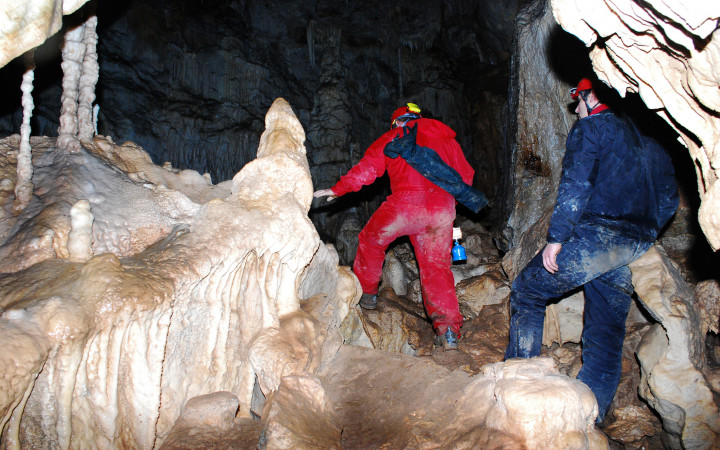Today’s Wonder of the Day was inspired by Marcus from MN. Marcus Wonders, “Are caves pretty?” Thanks for WONDERing with us, Marcus!
Can you imagine what it would've been like to be one of the first prehistoric people on Earth? What a challenge it must have been to try to navigate the world. Finding food, clothing, and shelter could not have been easy.
Depending upon where you lived, finding shelter might have been less difficult than it could've been. What did we use to call prehistoric people, after all? Cavemen! That's right. Many of them found caves to live in, because they provided shelter and stayed a constant temperature.
Prehistoric peoples weren't the only ones fascinated by caves. People have been exploring caves ever since, and they're still doing it today. Caves provide an interesting glimpse into the world beneath our feet.
Exploring caves goes by several different names. Some people use the term spelunking, which refers to the recreational hobby of exploring caves. The term dates back to the 1940s in the United States. It's unclear how it came to be used, but some experts believe it derives from the old Latin word spelunk, which meant cave.
People in the caving community don't use the words "spelunking" or "spelunker" much these days. Instead, most prefer the terms "caving" and "caver." The really serious cave explorers who are also scientists use the terms "speleology" and "speleologist."
Whatever terms you use, caves are fun to explore and provide the potential for great adventures. Across the U.S., there are thousands upon thousands of caves. Over 100 of them are open to the public for guided tours.
If you want to become a caver, the best place to start is by taking guided tours at nearby caves. The more you learn about caves, the more fascinated you will become. Many cavers then join caving clubs that help to teach advanced caving skills and guide expeditions into caves that aren't otherwise open to the public.
Whatever you do, don't ever go caving alone or without an experienced adult with you. Caves can be cool, wet, dark, and muddy. They can also contain deep water and tight crevices that can be dangerous and even deadly if you're not careful.
If you do go caving, you need to make sure you bring the proper gear. The most important piece of caving equipment is a light. This can take the form of a headlamp on your helmet (also important!) or a flashlight.
You will also need the proper clothing, waterproof boots, a map of the cave, and knee and elbow pads. If you're going on a longer expedition, you'll also likely want food and water, along with other supplies, such as a first-aid kit and a camera.




